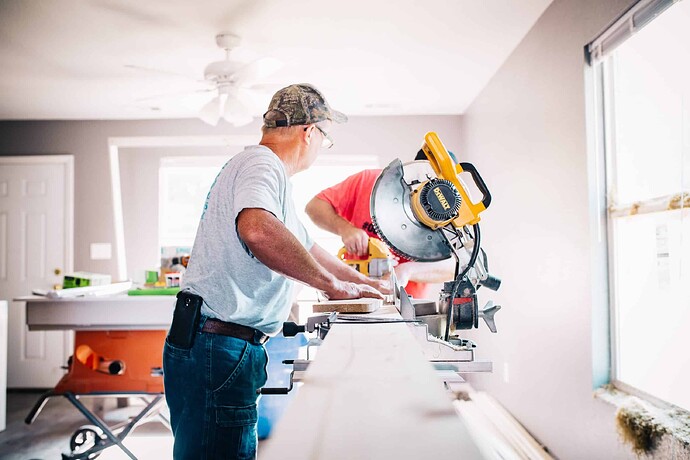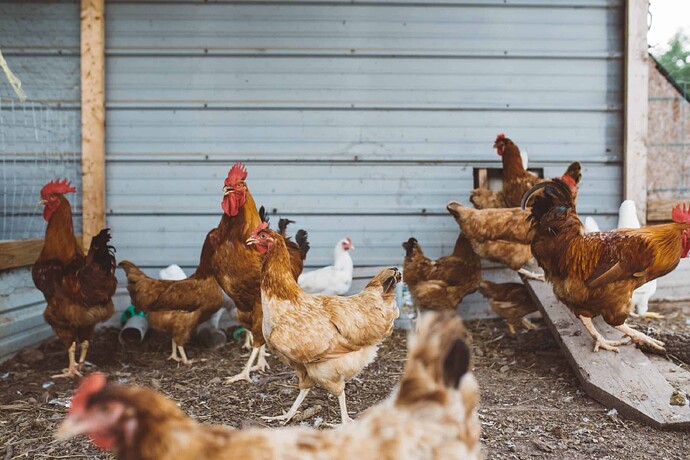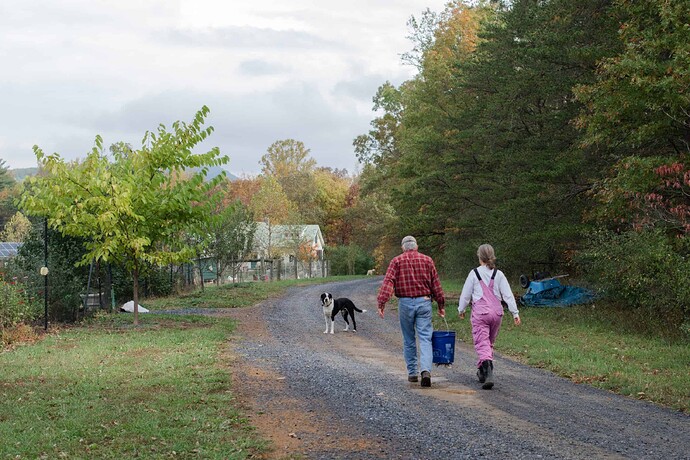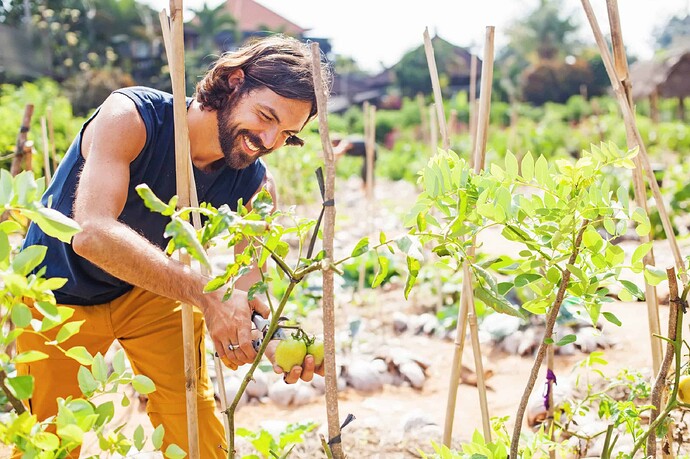Recently, a reader suggested that I write an article on the challenges for new farmers to help those just getting started. I agree that it is an important topic. There are a lot of things that I wish I had known as my husband and I started clearing our land and farming while building a house at the same time. Since I can only fit so much in a single article, I hope that fellow members of the PP tribe will chime in with their tips in the comments section.
Money and Budgeting
I am throwing this one out there because it is often the most looming one. Getting started in the country is not cheap. Even if you are like us and had a chunk of overgrown family land, there are still enormous financial hurdles to jump over.
I will use our experience as an example. When we were 24 years old, my husband and I were given 10.75 acres of land. My grandfather originally owned a larger property that was split up between his sons. It was what he had at the end after a life that took him from being dirt poor with no shoes to wear as a child to a farmer with 30 acres and a paid-for house. Of course, he worked himself into the grave for it. Twenty-eight years at a paper mill and farming all the time took its toll. In his younger days, he logged and made liquor.
So here we were with very little money but a chunk of undeveloped, very mountainous land. I had a job as a financial planning assistant that I was doing remotely. That only lasted for a short period. The recession of 2008 resulted in a job loss for me. I started writing, but that was slow going. The camper we lived in cost $300 and had no running water and very little electricity.
When we were broke, we found things to do that required little or no money but improved our property. Clearing land with a brush ax, weedeater, and even handsaws is something we did a lot of. Odd jobs like mowing grass for others or short-term construction jobs helped bring in some income too.
Growing some of our food helped our budget too. We raised pastured pork, a calf for beef, chickens, and grew some vegetables. Sometimes we traded a little of our excess.
As far as the house building went, we literally built it $500 at a time. Did it take us years? Yes! But we built it with very good materials like Hardiplank and real wood walls and floors, and at the end, it was 100% ours. No mortgage and no bank loan. The trade-off was years without running hot water or indoor bathrooms and plumbing. We spent two winters in an 18 ft camper from 1978 that we struggled to keep at 60F. Temps outside sometimes got to -10F in the winter.
So overall, my advice is to go for it when you can but have a list of things that you can do to improve your situation when money is tight, or you have to wait around for some other reason.
Doing work yourself is always cheaper, even if you have to go slower or redo things sometimes when you mess up.
[caption id="attachment_647678" align="alignnone" width="2560"] Photo by Annie Gray on Unsplash[/caption]The cost of hiring someone to do many jobs is 3x what it costs to do it yourself. At least that is what we found when building our house. Contractors have to pay for taxes, insurance, and a good enough salary for their workers to make a living. Contractors also have to charge for the time they spend procuring supplies for a project.
At the same time, know your limits. Some projects really are beyond what some people are capable of. Some things may be too dangerous, the tools may be too expensive to make it worthwhile, or the risk of doing a lot of damage is too great.
Avoid taking on too many different projects at once.
[caption id="attachment_647680" align="alignnone" width="2560"] Photo by Glenn Carstens-Peters on Unsplash[/caption]Farming and homesteading are both exciting. There are so many things that you could do, but it is important to understand that you cannot do them all. You need to pick and choose a few projects, especially when you are just getting started. A lot of people find getting a few backyard chickens is a good place to start. Grow a reasonably sized garden and if you find that you can handle that and have some success, then grow a larger one next season. My husband and I definitely took on too many different projects at once at times. We still find ourselves in that mode a lot of the time, but we admit that it is not good and leaves one feeling exhausted and stretched too thin.
In the beginning, taking on too many projects can lead to people giving up on farming and homesteading because they feel like they are failing because they cannot do enough or do it well. When you try to take on too many new things at once, it is hard to get very skillful at any of them.
There is a learning curve to anything. Don’t expect too much of yourself the first few times you have to do something new.
Occasionally, someone wants to come to our farm to learn how to butcher, grow Shiitake mushrooms, etc. We have noticed that people have very high expectations of what their initial skill level should be. This mindset leads to disappointment. The first few times you do something, don't expect for it to be easy or to be able to do it on the same level as the person showing you how.I remember what it was like in the beginning. When Matt and I started out on our farm, we had recently stopped working jobs in offices, although I was still working some via telecommuting. I could not even walk up the mountain without huffing and puffing. Over the next year, I lost over 25 lbs.
When we started working on our house, we had to learn as we went. Matt had worked some construction jobs, but I have zero carpentry, masonry, or other building experience.
Farmers may make some tasks look easy at times, but that is only because they have performed the task time and time again. You will get there, too, if you put in the time and effort.
Make sure to allow extra time for tasks to be completed that you have little to no experience doing. You need to take the time to learn. Remember that hastily done work can lead to serious injury when performing many farm tasks. It is not worth it to rush.
Butchering livestock is harder for some than others. It takes practice even if you are not squeamish or prone to crying.
[caption id="attachment_647672" align="alignnone" width="2560"] Photo by Brooke Cagle on Unsplash[/caption]The first time we butchered chickens, we managed to only do about 6 in an entire day. We did not have a mechanical chicken plucker to do that part for us, so we had to scald the birds and do it by hand. It was really smelly and frustrating, but over time and with better equipment, we got to where we could butcher 42 in a morning.
We raised a lot of pastured pigs and even butchered and processed a cow on the farm. We field-dressed more cows before sending them to the meat locker for further processing.
Taking an animal’s life is not easy or enjoyable, but it is part of the deal if you eat meat. Remember that someone else is doing this for you all the time. Having to kill your own meat makes you think.
It does get easier the more times you participate, but that doesn’t mean you won’t gag at the smells or be emotionally affected sometimes.
I recommend learning how to butcher from someone that has done it plenty of times if you can. If not, then get some books and study them before trying it yourself.
Most things take a lot longer and cost more than you initially thought. Expect it.
When we started building our house, I had no idea that it would take as long as it did. We were building small, after all. Matt and I did 90% of the labor ourselves. He had a friend help with some siding, roofing, and a little bit of pulling wires for the electrical system, and that was it. When you have never built a house before, it is easy to do cost estimates and then realize that you left something out or something didn't go together the way you wanted it to, so you have higher material costs now.There will be delays that you cannot plan for when farming or homesteading. Weather can play a major role. Money is another factor. It took years to build our house. I didn’t have a working bathroom for years, and it was a full five years from the time we started living in our camper until I had hot running water. I realize my case is a little extreme because we were young, determined, and without the income to move things along at a fast pace.
The lesson we learned about costs is to always plan on things costing 10% more than initial estimates. If you come in under, that is great, but if things go over, you don’t have to struggle so much.
Farming is not for everyone. If your partner or spouse is not into the idea of it, then pushing them into it is probably a mistake. Marriages have ended over this.
[caption id="attachment_647683" align="alignnone" width="2560"] Photo by Zoe Schaeffer on Unsplash[/caption]Before you take on a lot of farming projects or move out to a rural area to start farming, make sure you and your spouse or partner are both clear on all aspects of making a move. Some people do not like rural life, but they don’t realize that until they experience it.
Couples who have not been together for very long should exercise caution before making any big life-changing decision. Farming requires working together on some level. Figuring out how to divide up the labor takes some teamwork. Not being on the same page or setting unrealistic expectations for yourself or your spouse is a recipe for disaster.
You will work very long hours during certain times of the year or lose your crops.
You cannot put off some tasks for the next day or next week without dire consequences. You may be tired, but you still have to work. During the growing season and at harvest, the hours will belong. In the Fall and Winter, the workload will lighten.Good help is hard to find. Friends that "volunteer" are often unreliable or want to get away and party on the farm.
People will offer to come help you, and either they won't, or they will come out and not help much. Sometimes people treat coming out to a farm to do work as a mini vacation. There will be some that simply want to enjoy the perks of a nice view and being out in the country where they can throw back a few beers and burn a fire. You will find yourself getting even less done with the extra set of hands than if you had just attempted to do a lot of work yourself.Remember how easily people can get discouraged too. Don’t give volunteers without any real farm experience any of the really grueling tasks. They will give up or do them so slowly that it is not worth it for anyone.
Friends will say they will come to visit you at your new place but then they won't. Living rural means finding new friends and living a somewhat isolated existence compared to town life.
Get ready for a lot less company from friends and family. Even a 20-30 minute drive to your place is enough to ensure that you don't get many visits. That is just the way it is. People may have good intentions, but they have busy lives, and it is easy to let a visit out to see someone get put on the backburner indefinitely.Even if you plan a gathering well in advance, don’t expect most people to come unless you are a really lucky person. Make an effort to get to know those that are geographically closer to you and immerse yourself in your new community. This doesn’t mean you have to give up on your old friends or not invite family up. Do what you can to keep in touch with those you love and care about and make an effort to see them sometimes.
Organic does not mean crops are not sprayed. New farmers need to realize that it is not realistic to not use sprays or powders to prevent crop damage from disease, insects, and fungi.
[caption id="attachment_647686" align="alignnone" width="2560"] Photo by Neonbrand on Unsplash[/caption]Organic farms use sprays and powders to control diseases. In fact, organic farms may spray more often and use more gallons of spray than conventional farms. The difference, of course, is that organic sprays are derived from natural ingredients. That doesn’t mean they are not plenty nasty to deal with. You still have to wear a mask and protective gear to spray safely.
Do not make the mistake of thinking you can grow crops without spraying or dusting at times. You may occasionally succeed at growing a little food, but I can guarantee you that your yields will be far less, and the quality of your crops will suffer. You may also get nothing at all.
Be open to using natural sprays, dusts, and other methods for controlling disease, insects, and fungi.
Realize that being 100% self-sufficient is not realistic for most people.
Most people do not have the land they would need even to begin to be 100% self-sufficient. The labor and skills involved with growing and making everything yourself are just too much. If a large enough group of people worked together on a large enough piece of land, then it might be possible. Communal living does not have a great track record. I am not saying it never works or never could work, just that it is rare for it too. Even The Farm in Summertown, TN, has found that they had to adopt a more individualistic approach to ownership to continue, and they are one of the most successful communes out there.In the past, people farmed and produced excesses of certain crops and goods that they could sell or barter for the things they could not produce or make themselves. Coffee, tea, sugar, and wheat flour are all good examples of basic items that people consumed but did not produce. Any clothing made from anything besides wool required purchasing cloth even if the clothing was ultimately sewn at home.
There are things that can happen that are beyond your control.
Farming sometimes leaves one thinking that they should have done more or "if I had just done this, then that wouldn't have happened." While you can look back in hindsight and see a solution, the truth is that some things are not entirely predictable or in your hands. While there is nothing wrong with learning from experience, you do need to realize that some things are not under your control. Unpleasant things happen. Weather patterns can last for years and impact crops each time. There may be some years where certain crops just fail. This is one argument for growing some variety of crops rather than one or two large monocultures.Varmints and pests prey on livestock sometimes despite all your defenses. No farmer that has been at it for very long has never lost some chickens or other stock. You can have a well-defended chicken coop and free-range during the day and lose a few to hawks, but that doesn’t mean you shouldn’t ever turn your chickens loose.
Sometimes despite all your care and nights spent doctoring sick animals, they die anyway. It is one of the hardest parts of raising livestock.
New farmers have to learn to take the bad with the good.
You will have to do something about varmints and pest animals.
There is always something that would love to make a meal out of your livestock. You can handle this in a variety of ways. Deterring predators with good fences, cages, dogs, or motion sensor lights are all good first steps. The ugly truth is that at some point, you will have to either use a live trap and relocate pests, or you will have to kill them. You may have to catch them in a live trap and then kill them. While relocating animals sounds like the best thing to do, it can be dangerous or even illegal. Dumping an animal out somewhere else may just be making them someone else's problem. In some areas, you may be able to call animal control to take them away, but unless it is a cat or dog, there is a good chance they are just going to eliminate them anyway and not tell you anything about it.Growing plant crops and having no livestock can still mean that animals die as a result of farming. Consider how many animals die due to the use of grain harvesting equipment? There is no 100% cruelty-free agriculture.
Conclusion
Farming and homesteading are well worth it despite the challenges they present. In today’s challenging times, producing food and other consumables is something that a lot more of us are going to have to do. Although it is best to start small, with time and experience, you will be amazed at what you can accomplish and how much you can prosper.
What advice do you have to add? What challenges did you face when starting out?
This is a companion discussion topic for the original entry at https://peakprosperity.com/the-challenges-new-farmers-and-homesteaders-face/






